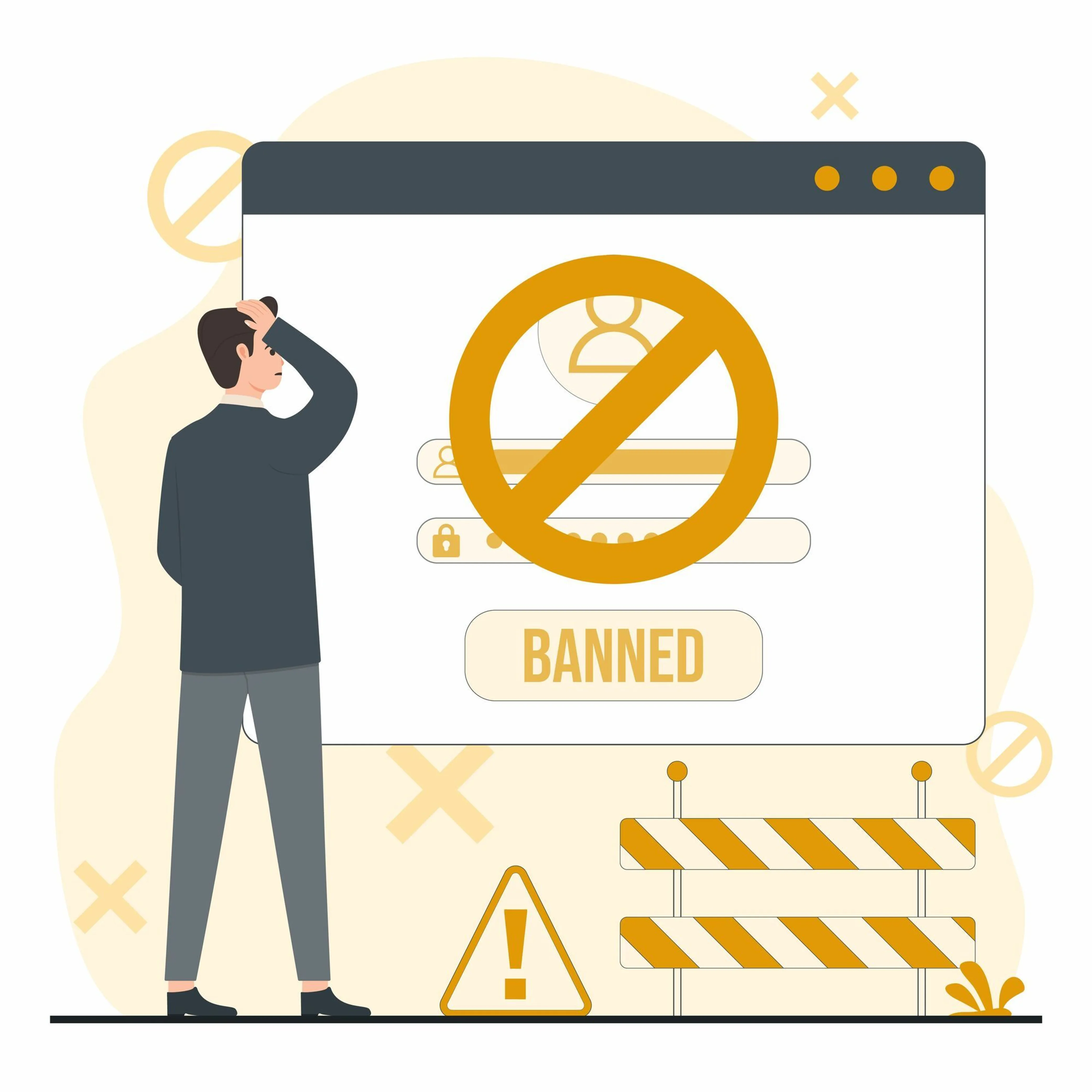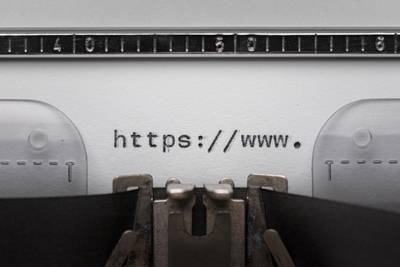The most common mistakes that put customers off on a website are: focusing on yourself instead of on customer problems, excessive bragging at the expense of specific information, lack of segmentation, and too large blocks of text.
Other common mistakes include: lack of authenticity and an “About Us” section, unintuitive navigation to even non-functional forms or buttons that do nothing when clicked.
The following article describes all these mistakes and many more in detail. You will learn how not to make it difficult for customers to use your services or buy your product.
You write about yourself, not about your clients' problems
One of the most common mistakes made when creating a company website is focusing on themselves instead of on the problems of their customers. Many companies fall into the trap of self-promotion, forgetting that it is the customer and their needs that should be the center of attention.
Avoid headlines like "We've been market leaders for 20 years"
Imagine that you enter a company's website looking for a solution to your problem, and the first headline you see is "We've been market leaders for 20 years." Is this information important to you at this stage? Does it answer your questions and concerns? Probably not.
Such headlines are a manifestation of the company's thinking about itself, not about the customer. Yes, information about the position in the market can be important, but not as the main message on the website.
Write about customer problems and offer solutions
Instead of writing about yourself, focus on the problems and needs of your potential customers. Consider:
- What challenges do they face?
- What solutions are they looking for?
- What hurts them, frustrates them, worries them?
- What do they dream about and what are their aspirations?
Once you know the answers to these questions, craft headlines and content that directly address customer pain points and offer valuable solutions.
For example, instead of a headline like "We've been market leaders for 20 years," use a message like "Save 10 hours a week on project management." This message immediately points to a specific customer pain point (wasting time on project management) and promises a solution (saving 10 hours a week).
You can mention yourself second
Of course, this does not mean that you cannot write about your company at all. Information about your position, experience, or offer is absolutely necessary. However, on the home page, it should be placed below the main heading addressed to the customer.
The ideal place to introduce yourself is, for example, the subtitle of the hero section or one of the following paragraphs. You can put a few words about yourself there, but remember that the main function of this content is to build credibility and trust, not to brag.
Answer customer questions instead of bragging
Another mistake is excessive bragging instead of answering real questions and concerns of customers. This is a mistake closely related to the previous one. In this case, however, it is not about writing what we do not do, but rather how we are not great. Displaying countless awards, certificates and distinctions on the website does not always bring the desired effect.

Be careful with information about awards you have won
Of course, there is nothing wrong with posting information about awards you have won on your website. It can increase the credibility and prestige of your brand in the eyes of customers. However, it is worth doing it in moderation and with sensitivity.
It is important that the awards you boast about are recognizable and relevant to your audience. A distinction won in an industry competition that few have heard of will not necessarily impress potential customers. On the other hand, a well-known and respected award can really reinforce your message.
Countless counters of completed projects usually do not work
Many companies believe that information such as "1000+ completed projects" or "500+ satisfied customers" will inspire trust in recipients. Unfortunately, today such tricks are already overused and often have the opposite effect than intended.
Modern consumers are quite skeptical of marketing content. When they see such counters, they often suspect that they are inflated or even made up. Instead of trust, there is distrust.
Paid rewards are a sure way to lose credibility
Unfortunately, it happens that companies brag on their websites about awards that they simply paid for. Such practices are asking for trouble.
In the age of the Internet, it is very easy to verify the credibility and prestige of various awards. If customers discover that the award you are bragging about was awarded in a competition where the only criterion was the entry fee, your brand will immediately lose in their eyes. The effect will be the opposite of the intended one - instead of trust, there will be reluctance and a feeling that you are trying to cheat them.
So if you want to brag about prizes on the site, make sure they are actually valuable and earned honestly. Otherwise, it's better to give them up.
Instead of bragging, focus on valuable content
Of course, this doesn't mean that your site should be completely devoid of information about successes, awards, or customer numbers. It's more about balancing proportions and not making such boasts the main message.
Instead of highlighting awards, focus on providing content that will be valuable and helpful to your audience. Think about what information they are looking for, what doubts they want to resolve, what questions they are asking. And answer those questions first.
Imagine that you are planning a bathroom renovation and are looking for a company to do it. You go to the website of renovation company A and see a long list of awards they have received - unfortunately none of them mean anything to you. On the website, you also find a counter "1000+ renovations completed", but you approach it with considerable skepticism. However, you do not find an answer to the question that is troubling you - how long can your bathroom renovation take and what costs you should expect.
Now let's assume you go to the website of a competing renovation company B. Instead of bragging, the company offers a practical guide "How much does a bathroom renovation cost and how long does it take?". In the guide, you find exactly the information you need. At the same time, the company confirms its expert position in the industry. Only at the end of the guide is there a brief mention of the "Bathroom of the Year" award, won by the company in a prestigious competition.
Which company's offer do you think will be more convincing - A or B? Probably the latter - because it provides you with real value and answers your questions, instead of just bragging about its successes.
Large blocks of text that no one reads
Another mistake that companies make on their websites is publishing long, monotonous blocks of text. Such content is difficult to read, bores the reader and discourages them from reading further. As a result, the marketing message does not reach the recipient and the site does not fulfill its role.

On the Internet, brevity and clarity count
When writing content for a website, always keep in mind the specifics of content consumption on the Internet. Users browse websites differently than they read books or newspapers, for example. They usually do it quickly, cursorily, "scanning" with their eyes in search of information that interests them.
Only a few people read the content on the pages from cover to cover, word by word. Most Internet users simply do not have the time or patience for this. If they do not find what they are looking for quickly, they will simply leave your site and go somewhere else.
That's why it's so important for the content on the page to be as concise, clear and well-structured as possible. Long blocks of text without subtitles, paragraphs or bullet points will simply put readers off.
Divide your content into paragraphs, use headings and bullet points
To avoid the "wall of text" effect, use simple methods that make reading and navigating the content easier. First of all, divide the text into short paragraphs - each should contain one or two main thoughts. Avoid paragraphs longer than 3-4 sentences.
Use subheadings - preferably in the form of questions or keywords. Subheadings allow the reader to quickly orient themselves in the structure of the text and pick out interesting fragments. At the same time, they introduce visual "breaks" in the text, which makes it easier to absorb.
Where possible, use bullet points and lists instead of long, continuous text. Bullet points are great for presenting things like product features, steps in a process, a list of benefits, etc. They help present content in the most condensed and clear way possible.
Write in the language of benefits and simple vocabulary
In addition to the appropriate structure of the text, it is also important for the language itself to be as accessible and understandable to the recipient as possible. Avoid industry jargon, complicated terminology or long, convoluted sentences.
Write in a simple, specific and reader-oriented way. Instead of describing a product or service from a technical perspective, focus on what the customer gains. Indicate what problems your offer solves, what needs it satisfies, what aspirations it allows to fulfill.
Let's say you're looking for a new smartphone. You go to the manufacturer's website and come across a long, several-paragraph text describing the latest model. The text is continuous, written in a professional language, full of technical specifications and incomprehensible terms. You feel your attention waning with each subsequent line. Eventually, you leave the page discouraged, not fully understanding how this smartphone is different from others and what you will gain by buying it.
Now imagine that you come across the website of a competing smartphone manufacturer. Instead of a long, professional description, you see the text divided into short paragraphs and sections with attractive headings such as "Take the perfect photo with one touch" or "Battery that will last up to 3 days". Under each heading, you find several clear points presenting key features and benefits. The language is simple and understandable, focused on practical applications and solving your problems.
Which description will encourage you to read further and ultimately make a purchase decision? Probably the latter, because it is transparent, accessible and focuses on what really interests you as a customer.
Educate instead of sell hard - get inspired by Inception
When selling on a website, it is worth taking inspiration from the film "Inception". In this science fiction thriller, the goal of the characters was to implant a specific idea in the mind of a sleeping person in such a way that he would wake up convinced that it was his own thought.
Similarly, you should communicate with the customer on a website. Instead of attacking them with hard sales and aggressive promotion of the offer, it is better to focus on education and providing valuable content.
Respond to customer questions and objections
Prepare content that addresses the most common concerns and questions from potential customers. This could include:
- Detailed descriptions of the benefits of your products/services
- Comparisons with competitive solutions
- Answers to frequently asked questions (FAQ section)
- Explanations of the purchasing and customer service process
- Guarantees, warranties and return policy
The idea is that after reading your website, the customer will no longer have any objections or doubts. That they will be convinced that you are offering them the best possible solution to their problems.
Offer a product that can't be refused
Once the customer is "familiar" with your offer thanks to valuable content, present them with an offer they can't refuse. Make sure the offer is:
- Tailored to his needs (personalized)
- Priced to fit the client's budget (remember, it may not be for everyone)
- Easily available (fast shipping, various payment methods)
- Covered by guarantees (money back, free repairs)
When the offer is tempting enough, the client will decide to cooperate. He won't feel like you're imposing it on him, because it will be "his own decision."
Remember - no one likes being forced into buying products. That's why on your website, focus on educating the customer and building their trust. Leave the sales offer for the end - as the culmination of the whole process, not the starting point. This will help avoid rejection of the offer and gain the customer's favor.
You present everything in one place
Another mistake that companies make on their websites is presenting all information and offers in one place. This "one size fits all" approach is rarely effective because it does not take into account the diversity of the audience and their needs.

Different customers have different needs and expectations
Your prospects are not a homogenous mass. Rather, they are a collection of different personas, each with their own unique needs, problems, expectations, and preferences. For example:
- Some customers may look for the cheapest offer, while others value quality above all.
- Some customers are very knowledgeable about your industry, others are just starting their search and need basic information.
- Some customers prefer telephone contact, others want to do everything online.
Trying to address these different needs with a single, universal page or offer is asking for trouble. Such a page will likely be overloaded with information, chaotic, and difficult to navigate. As a result, everyone will find "something for themselves" on it, but no one will be completely satisfied.
Segment your customers and personalize your communication
The solution is to segment customers and adapt communication to individual groups. Instead of one universal page, it is better to create separate pages or sections adapted to different personas and their purchasing paths.
For example, if you sell to both individual and business customers, consider creating two separate sections on the page - "For You" and "For Businesses". Each of them should have a slightly different structure, scope of information and communication style, adapted to the specifics of a given segment.
Similarly, if you offer different products or services, it is worth creating separate subpages for them. Thanks to this, a customer interested in a specific solution will immediately reach the dedicated page, instead of wading through a thicket of irrelevant information.
Guide your customers along a personalized path
Segmentation and personalization are not only a matter of the structure of the website, but also of marketing communication. Modern tools such as marketing automation or real-time personalization allow you to adapt the message to a specific recipient based on their behavior on the website, purchase history or demographic profile.
For example, if a customer returns to your website for the umpteenth time, instead of showing them the same welcome message for the umpteenth time, you can present personalized product recommendations based on their previous interactions.
This approach allows you to lead the customer along a personalized path, providing them with the most tailored information and offers at all times. This translates into a better user experience, higher conversions and greater customer loyalty.
Divide your website into sections and subpages dedicated to different groups of recipients and their unique needs. Use personalization tools to lead the customer along a personalized path through the purchasing process. This is key to ensuring a good user experience and maximizing conversions.
If you change nothing, nothing will change…
One of the biggest mistakes businesses make with their websites is leaving them as is after they’ve been published. Many businesses treat a website as a one-time project – something that only needs to be created once and will last for years. Unfortunately, this approach rarely yields good results, especially in today’s world…

The market and customer expectations are constantly changing
Your website does not exist in a vacuum. It is surrounded by dynamically changing market and technological realities. What was innovative and attractive to customers a few years ago may be outdated and ineffective today.
Just look at the evolution of trends in website design - what used to be standard (e.g. sliders, long pages built on the basis of Parallax) is now passé. User preferences and behaviors are also changing - for example, more and more people browse websites on mobile devices, which requires responsive design and optimization.
If your website does not keep up with these changes, it gradually becomes less effective. It stops attracting attention, engaging users, generating leads and sales. In extreme cases, it can even put off potential customers who perceive it as outdated and unprofessional.
Continuous improvement of the website is a must
To avoid this problem, it is necessary to constantly monitor and improve your website. Treat it not as a one-time project, but rather as a constantly evolving organism that must be constantly adapted to changing conditions.
What does this mean in practice? First of all, regularly analyzing data and indicators such as website traffic, bounce rate, conversions, and user engagement. Tools such as Google Analytics allow you to constantly monitor these metrics and identify potential problems (e.g. pages with a high bounce rate).
Based on this data, you can make gradual improvements - optimize content, improve navigation, eliminate elements that do not work. It is also worth regularly refreshing the design of the website to keep up with current trends and standards.
Testing new solutions is essential
A/B testing is an important part of continuous improvement of a website. It involves creating two versions of a given element (e.g. a CTA button or a headline) and directing traffic to them to see which version works better.
A/B testing allows you to optimize your website based on hard data, instead of intuition or subjective opinions. Thanks to them, you can gradually, step by step improve the effectiveness of the website, eliminating elements that do not work and strengthening those that bring results.
No section: About us
If you have read the previous sections of this article carefully, you are probably thinking now: "But Adam, it wasn't supposed to be about us, but about the client's questions. What is it all about in the end?" I'll explain :)
People buy from people, not companies
Why is the "About Us" section so important? Because people prefer to do business with those they know, like and trust. And it's hard to build such a relationship if the customer has no idea who you are, what your company's history is, what your values are.
The "About Us" section is a place where you can introduce yourself, tell your story, show the human face of your brand. This is where you build the foundations of a relationship with a potential customer, make them stop seeing you as an anonymous corporation and start seeing you as a team of committed people with a mission.
Without this section, your website can seem impersonal and generic. The customer may have doubts about your credibility and authenticity. As a result, they may choose a competitor who better communicates who they are and what they represent.
Just remember that only a section or subpage should be about you! You can't write about yourself all the time. Show that there is a real person behind the text, but don't focus the entire page on it!
About us is not a place for dry facts
Of course, the mere presence of an "About Us" section is not everything. Its content and form are equally important. Many companies make the mistake of posting dry, encyclopedic information here - date of establishment, organizational structure, achievements, etc. Meanwhile, the "About Us" section is not a Wikipedia entry, but a space for spinning an engaging story.
Instead of dry facts, focus on storytelling. Tell the story of how the company was founded, present its mission and values, show the people behind the brand. Use the language of benefits - emphasize what your values and experience mean to the customer, how they translate into the quality of the products or services offered.
Don't be afraid to show the personality of your brand either. The "About Us" section is a great place to communicate your unique style and character. Are you a modern and dynamic brand, or rather traditional and value-based? The tone and style of your "About Us" section should reflect this.
About us is not just a text
When writing about the "About Us" section, it is easy to focus only on the text layer. Meanwhile, visual elements are equally important here - photos, graphics, and possibly also video materials.
Photographs of the team, office, production process - these are powerful tools for building authenticity and trust. Seeing the faces of the people behind the brand, the interior of the company, the place where the products are made, the customer will connect with your brand emotionally much more easily. Photos speak more strongly than text alone - it is worth using this.
Let's assume that you are looking for a company that makes custom-made furniture. You go to the website of company X - you find attractive photos of products, descriptions of services, a price list. Everything looks professional, but something is missing. You have no idea who is behind this company, what experience they have, what values they represent.
Now you go to the website of the competing company Y. Along with similar information about the offer, you will find an extensive "About Us" section. You see a photo of the founder, a description of his passion for carpentry, the history of the company's creation. You read about the values that the team professes - attention to detail, respect for the customer, love of wood. You look at photos of the studio, getting to know the faces of the carpenters who create the furniture.
Which company will you most likely choose? Probably company Y, because it gave you the chance to get to know and like the people behind the brand. It made you see it not only as a service provider, but also as a team of dedicated professionals with a mission.
To sum up - don't underestimate the "About Us" section on your website. It's a place to build relationships and trust with a potential customer. Instead of dry facts, focus on engaging content and convincing visuals. Show the human face of your company and you'll be more likely to convince customers to work with you. Remember - people buy from people, not from impersonal corporations. Give them the chance to get to know and like your brand in the "About Us" section.
No social validation. Show testimonials!
Potential customers, after viewing your website, often ask themselves: "Is all this true? Is this company really as good as it says it is?" This is where social validation comes in, and testimonials in particular.

Recommendations from others build trust
Social confirmation is a powerful tool of persuasion. Its power lies in the fact that as humans, we tend to follow the crowd and trust the choices of others. If we see that someone has already used a given offer and was happy with it, we ourselves are more inclined to trust the brand.
Testimonials are the most direct form of social confirmation. They are simply recommendations and opinions of satisfied customers who describe their positive experiences with your company. Such a recommendation works much more powerfully than even the most convincing description of the offer created by the company itself.
Why? Because testimonials are authentic and unbiased. It is not the company that praises itself, but its customers do it of their own free will. Such a recommendation builds trust and credibility, shows that marketing slogans are based on real experiences and satisfaction of the recipients.
Different types of testimonials
Testimonials can take many forms. The most basic are simply quotes from satisfied customers, placed in a visible place on the website (e.g. on the home page or in the description of a specific service). Such quotes should be appropriately displayed graphically and provided with the name and surname (and possibly the position or company) of the author, which increases their credibility.
It is even better if the quote is combined with a photo of the customer - such a photo additionally authenticates the message, showing that there is a real person behind the opinion. Of course, the photo should be authentic and of good quality.
In addition to quotes, video testimonials are also a great form of testimonials. A short film in which a satisfied customer talks about their experiences with your brand can be extremely convincing. A video adds authenticity and allows the recipient not only to hear, but also to see and, as it were, "feel" the customer's satisfaction.
Testimonials should be specific
Testimonials cannot be general in nature for them to be effective. Opinions such as "great company", "I recommend", etc. are not very convincing. Recommendations that point to specific benefits or solved problems work much better.
For example, instead of the general "great service", a quote like: "Thanks to service X, I saved 10 hours a week, which I can now devote to developing the company" would be better. Such a message is not only more credible, but also shows the potential customer the tangible benefits they can expect. Of course, they realize that in reality it may turn out differently, but such testimonial content is the ideal we should strive for.
It is also a good idea to select testimonials for different segments of recipients or stages of the purchasing path. Different opinions will be convincing for new customers looking for general information, and different for those who are already at the stage of comparing specific offers.
Let's assume that you are planning to invest in CRM software for your company. You go to the website of supplier X - there you will find a detailed description of the functionality, price list, information about the company. Everything looks good "on paper", but you are not sure whether it will actually work in your company.
Now you visit the website of a competing supplier Y. Next to similar information about the product, you see a section with testimonials. You find an opinion from the CEO of a company similar to yours, who describes how implementing this CRM allowed him to increase sales by 15% and save 5 hours a week on manual data entry. There is also a video recommendation from a satisfied user, who praises the intuitiveness and ease of use of the system.
Which CRM system will you be more inclined to choose? Probably the one from supplier Y, because its value is confirmed not only by marketing descriptions, but also by the real experiences of other entrepreneurs. Additionally, you can always contact this person and ask how the system works in his company.
The eternal game of appearances - the big ones pretend to be small and the small ones pretend to be big
Large corporations often try to improve their image by pretending to be smaller, more "human" brands. Small companies, on the other hand, often try to look bigger and more "corporate" than they actually are. However, this game of pretense is rarely effective and can do more harm than good.

Customers appreciate authenticity
Consumers have become extremely sensitive to any signs of inauthenticity or dishonesty in brands. Attempts to create a false image are quickly exposed and can seriously damage a company's reputation.
If a large corporation suddenly starts pretending to be a small, local business on its website, using colloquial language and "homemade" photos, it can easily be accused of cynicism and manipulation. Customers can feel cheated, which undermines their trust in the brand.
On the other hand, when a small company tries to force itself to look like a large corporation, using overly formal language and stock photos of office buildings, the effect can also be the opposite of the intended one. Instead of professionalism and credibility, such a website can communicate pretentiousness and lack of self-confidence.
Be yourself, that's enough - as long as you deliver value...
Instead of getting involved in the game of pretense, it is better to focus on authenticity. Your website should honestly reflect who you are as a company - your values, your organizational culture, your unique style.
If you are a large corporation, do not be afraid to communicate it. Emphasize your experience, reach, stability. At the same time, show the human face of your brand - introduce your team, describe your social initiatives, share the "behind the scenes" of your activities. Be professional, but not cold or arrogant.
If you are a small company, see it as your strength, not a reason to be ashamed. Emphasize your flexibility, individual approach to the client, direct relationships. Do not pretend to be a corporation, but do not lose your professionalism either. Show that although you are small, you are an expert in your field and offer high quality.
Ultimately, there is a place for everyone on the market. Business is in most cases a marathon, not a sprint, and you probably do not want to have to pretend for the next 10 years.
Brand consistency is key
The key to authenticity is consistency. Your website should communicate the same values and image as your other communication channels – social media, advertising materials, customer service, etc.
If you present yourself as innovative and modern on your website, but your social media profiles look like they’re from a decade ago, this inconsistency will be immediately noticeable. If you describe yourself as a company that’s close to the customer, but your service is distant and bureaucratic, the promise will be unfulfilled.
To avoid such situations, ensure a consistent brand strategy across all channels. Define your core values and personality, and then communicate them consistently – both on your website and in all other interactions with customers.
Broken forms and dead buttons

A broken form is a wasted opportunity
Contact forms are often the main channel through which potential customers try to contact your company. It can be a request for a quote, a question about a product, a desire to schedule a meeting, etc. Each such interaction is a potential opportunity to sell or build a relationship.
But what happens when the form doesn't work? The user enters their details, clicks "send"... and nothing. No confirmation, no feedback. In the best case, the customer will try again, maybe look for another way to contact them. But it is just as likely that, discouraged, they will simply leave your site and go to a competitor.
Such a situation is not only a lost opportunity for conversion, but also a potential loss for the brand image. The customer may think: "If they can't even make a form work, how can I trust them with their products/services?"
A dead button is a dead end
CTA buttons are key elements of the user path on the website. They lead the customer to the desired action - registration, purchase, downloading materials, etc. Their role is to encourage clicking and guide the user through the conversion funnel.
But what if the button doesn't work? The user reads a convincing text, is ready to act, clicks... and nothing happens. The website doesn't respond, there is no feedback. It's like hitting a dead end - the user's path is interrupted, and a potential conversion is lost.
Such a situation is not only frustrating for the customer, but also harmful to the brand. The user may feel cheated - they were promised something (e.g. a free e-book after clicking), and the promise was not fulfilled. This undermines credibility and trust in the company.
Test regularly to avoid problems
How to avoid these troublesome situations? The solution is to regularly test forms and buttons on the website. It is not enough to check once, when the website is launched - you need to monitor their operation continuously.
It is worth introducing a routine of regular tests - for example, once a week someone from the team should go through all the key forms and buttons, checking if they work correctly. In case of problems, they should be immediately escalated to the IT department and ensure that they are resolved.
It is also good practice to introduce automatic monitoring - tools that constantly check if all elements of the website are working and alert in the event of a failure. This allows you to react proactively before the problem affects users.
It is also worth regularly reviewing and analyzing data from forms and buttons - how many people fill them out/click on them, what percentage of fills are effective, etc. A sudden drop in these indicators may signal problems that were missed in other tests.
A real-life example: Let's assume that you run an online store with eco-cosmetics. On the home page you have a large, attractive banner advertising a new product line - when clicked, it is supposed to lead to a page with an offer. Unfortunately, due to the programmer's inattention, the link behind the banner is incorrect - it does not lead to any page.
The campaign starts, traffic on the site increases, but sales of new products are zero. Only after a few days, thanks to the vigilance of the customer service department, the problem comes to light - it turns out that many users tried to click on the banner, but hit a dead end and gave up on shopping.
If the banner had been tested regularly, the problem would have been detected before the campaign started and potential losses would have been minimized. If click-through and conversion rates had been monitored, the alarm would have been raised much sooner. But due to the lack of vigilance, the company lost not only potential profits, but also part of the trust of its customers.
Summary
There are many traps that can easily fall into when creating and running a website. The most common mistakes include focusing on the company instead of the customer, excessive bragging, publishing long and incomprehensible content, not segmenting the offer, and neglecting to update the website.
Equally important are issues related to building trust and authenticity. The lack of an "About Us" section, poor use of social confirmation, or attempts to pretend to be a different type of company than you actually are can effectively discourage potential customers. You can't forget about the technical aspects of how the website works either - broken forms or buttons are a sure way to lose customers and reputation.
The key to success is to constantly improve the website, regularly test its functionality, and ensure an authentic message. It is worth remembering that a website is not a static project, but a dynamic tool for communicating with the customer that requires constant attention and adaptation to changing market needs.
By avoiding the mistakes described in the article and focusing on delivering real value to customers, you can create a website that will effectively attract and retain recipients, translating into the success of your business.
Frequently asked questions
Why shouldn't I talk too much about my business on my homepage?
Customers come to your site looking for solutions to their problems, not information about your company. Focusing on their needs and offering specific solutions is more effective in attracting and retaining the attention of potential customers.
How long should the paragraphs on my page be?
Paragraphs should be short, ideally 3-4 sentences. Long blocks of text discourage readers. Use headings, bullet points, and short paragraphs to make content easier to scan and digest.
Should I put all the information on one page?
No, it's better to segment your content and target different audiences. Create separate sections or subpages for different products, services, or types of customers. This will make it easier to navigate and personalize your message.
Should I use professional, formal language on my website?
It depends on your industry and target audience. In general, it is better to use simple, understandable language that directly communicates the benefits to the customer. Avoid jargon and complicated terminology unless absolutely necessary.
How can I increase the credibility of my website?
Add an "About Us" section, include authentic customer testimonials, show specific results and case studies. Be transparent and authentic in your communication.
How often should I test the functionality of my website?
Regular testing is essential. Establish a routine of checking all forms, buttons, and links weekly. Consider implementing automated monitoring tools.
Should I use pop-ups and banner ads on my website?
Use them with caution. Too many pop-ups and banners can overwhelm users and increase bounce rates. If you use them, make sure they offer real value to the user and are easy to close.

Adam Naworski



